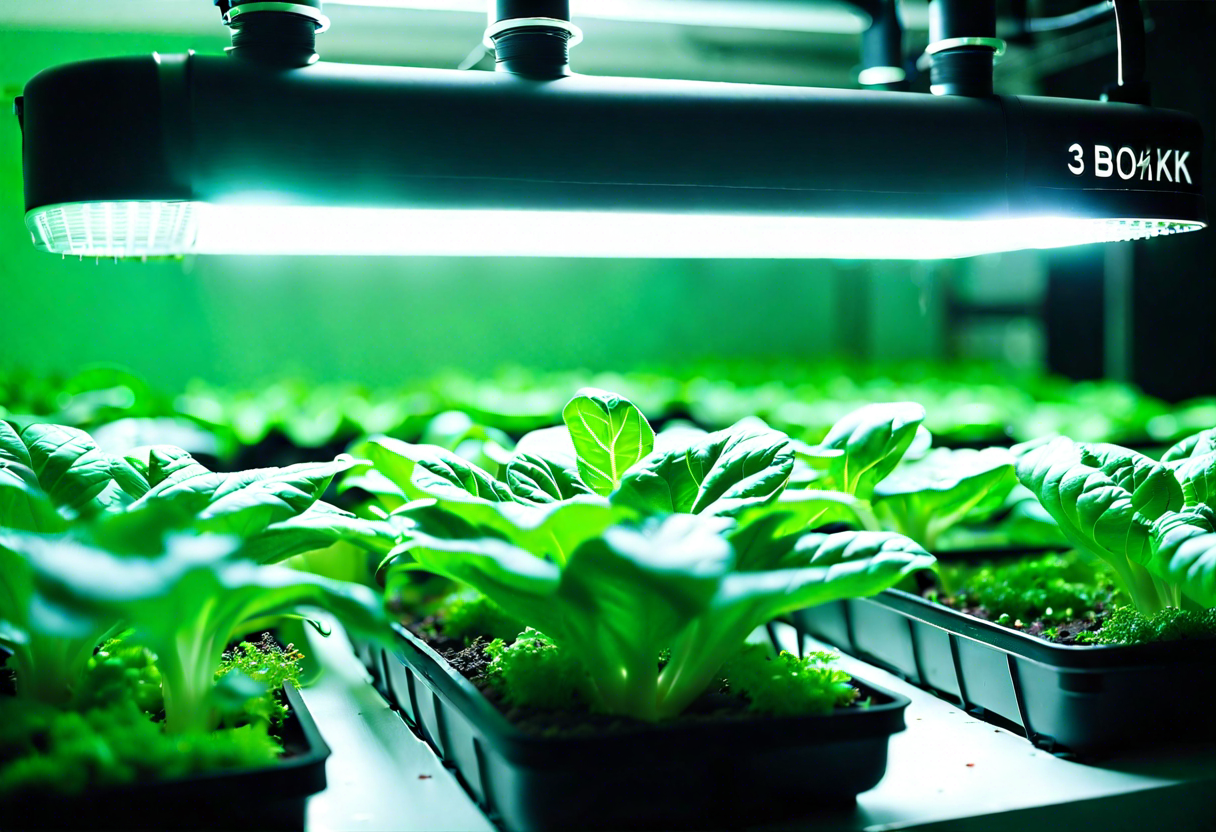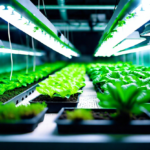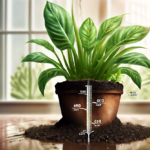Benefits of Using Indoor Hydroponics Kits for Growing Vegetables
Indoor hydroponics kits have gained popularity in recent years as a convenient and efficient way to grow vegetables. With these kits, you can cultivate a wide variety of veggies right in the comfort of your own home, regardless of the outdoor conditions. There are several key benefits to using indoor hydroponics kits for vegetable cultivation.
One of the primary advantages of indoor hydroponics kits is their space-saving nature. Unlike traditional soil-based gardening, which requires a significant amount of land, hydroponics allows you to grow vegetables vertically or in compact systems. This makes it an ideal option for individuals with limited space, such as apartment dwellers or urban gardeners. With a hydroponics kit, you can transform a small corner into a thriving vegetable garden.
Another benefit of indoor hydroponics kits is the ability to control the growing environment. These kits utilize water-based nutrient solutions instead of soil, allowing for precise control over the nutrients received by the plants. You can tailor the nutrient solution to the specific needs of each type of vegetable, ensuring optimal growth and health. Additionally, hydroponics systems often incorporate adjustable lighting systems, enabling you to provide the ideal amount of light for your plants at each stage of growth. This level of control leads to faster growth, increased yields, and healthier plants.
Indoor hydroponics kits also eliminate the need for traditional gardening tasks, such as weeding and watering. With hydroponics, the nutrient-rich water is delivered directly to the plant’s roots, providing them with a constant supply of water and nutrients. This results in less water waste and reduces the risk of over or under-watering your plants. Additionally, hydroponics systems reduce the risk of pests and diseases typically associated with soil-based gardening. By removing the soil, you eliminate common plant pathogens, making your vegetable garden less susceptible to pests and diseases.
Furthermore, indoor hydroponics kits allow for year-round vegetable cultivation. Unlike traditional outdoor gardening, which is limited to specific growing seasons, hydroponics kits provide a controlled environment that can support vegetable growth throughout the year. This means you can enjoy fresh, homegrown vegetables regardless of the weather conditions outside. Whether it’s winter or summer, you can have a bountiful harvest right at your fingertips.
Indoor hydroponics kits offer numerous benefits for growing vegetables. They save space, provide precise control over the growing environment, eliminate traditional gardening tasks, and allow for year-round cultivation. By incorporating an indoor hydroponics kit into your gardening routine, you can enjoy the convenience and satisfaction of growing your own veggies right inside your home.
Factors to Consider When Choosing the Best Indoor Hydroponics Kit for Veggies
When it comes to indoor hydroponics, choosing the right kit is crucial for the success of your vegetable garden. With numerous options available in the market, it’s important to consider certain factors before making a purchase. By taking these factors into account, you can ensure that you’re investing in the best indoor hydroponics kit for growing veggies.
1. Size and Capacity: Before selecting a hydroponics kit, consider the available space in your home. Determine whether you have enough room for a larger system or if a compact kit would be more suitable. Additionally, consider the number of vegetables you intend to grow. Some kits are designed for small herb gardens, while others can support a variety of vegetables at once.
2. Growing Method: Hydroponics systems use various techniques such as nutrient film technique (NFT), deep water culture (DWC), and aeroponics. Each method has its own advantages and requirements. Research the different growing methods to find the one that aligns with your needs and preferences.
3. Lighting: Adequate lighting is essential for the growth of your plants. Most indoor hydroponics kits come with built-in lights, but it’s crucial to ensure that they provide the right intensity and spectrum for your vegetable crops. Look for kits with adjustable lighting options to cater to different growth stages.
4. Nutrient Delivery System: The nutrient delivery system is a critical component of any hydroponics kit. It should provide a consistent supply of nutrients to your plants. Some kits utilize submersible pumps or air stones to oxygenate the nutrient solution, promoting healthy root development. Consider the efficiency and reliability of the nutrient delivery system when choosing a kit.
5. Ease of Use: If you’re new to hydroponic gardening, it’s wise to opt for a kit that is user-friendly and comes with clear instructions. Look for kits that include all the necessary components, such as grow media and pH testing tools. Additionally, consider the ease of maintenance and cleaning of the kit.
6. Price and Quality: Set a budget for your hydroponics kit and compare prices across different brands and models. While it’s tempting to opt for the cheapest option, prioritize quality and durability. Investing in a high-quality kit can save you money in the long run by ensuring the longevity of your system.
7. Reviews and Recommendations: Before making a final decision, read customer reviews and seek recommendations from experienced hydroponic gardeners. Real user feedback can provide valuable insights into the performance and reliability of different kits.
By considering these factors, you can navigate the market and choose the best indoor hydroponics kit for growing vegetables. Take the time to research and compare different options to ensure that you invest in a kit that meets your specific needs and helps you cultivate a thriving vegetable garden indoors.
Top-rated Indoor Hydroponics Kits for Growing a Variety of Vegetables
When it comes to growing vegetables indoors, having the right hydroponics kit can make all the difference. These kits provide an efficient and convenient way to cultivate a wide range of veggies without the need for soil. With the increasing popularity of indoor gardening, there are many options available in the market. To help you find the best indoor hydroponics kit for veggies, we have compiled a list of top-rated kits known for their effectiveness and versatility.
-
AeroGarden Harvest Elite: This hydroponics kit offers a compact design that is perfect for small spaces. It comes with a built-in LED grow light system that provides the optimal level of light for plant growth. The Harvest Elite kit has a simple control panel that reminds you when to add water and nutrients, making it ideal for beginners. With this kit, you can grow a variety of vegetables, including lettuce, cherry tomatoes, and herbs.
-
Click and Grow Smart Garden 3: This sleek and user-friendly hydroponics kit is ideal for seasoned gardeners and beginners alike. It comes with pre-seeded plant pods that contain everything your veggies need to flourish. The Click and Grow Smart Garden 3 uses innovative technology to ensure optimum moisture, light, and nutrient levels for your plants. With over 60 varieties of plants to choose from, you can easily grow a variety of vegetables to suit your palate.
-
VIPARSPECTRA Grow Tent Kit: If you’re looking to take your indoor gardening to the next level, this kit is a great option. It includes a high-quality grow tent, LED grow lights, ventilation system, and all the necessary accessories for a successful hydroponics setup. The VIPARSPECTRA Grow Tent Kit offers ample space for multiple plants, making it suitable for larger vegetable gardens. This kit can support the growth of various vegetables, including peppers, cucumbers, and leafy greens.
-
General Hydroponics WaterFarm Complete: This hydroponics kit is known for its simplicity and effectiveness. It utilizes a drip irrigation system to provide a constant flow of water and nutrients to your plants. The WaterFarm Complete kit can accommodate up to eight small to medium-sized plants, making it a good choice for small-scale vegetable production. It’s compatible with a wide range of vegetable varieties, making it a versatile option for growers.
-
Aquaponics System by ECOLIFE Conservation: If you’re interested in a sustainable and eco-friendly approach to indoor gardening, this aquaponics system is worth considering. It combines hydroponics with fish cultivation, creating a symbiotic relationship where the plants benefit from the nutrients produced by the fish. The ECOLIFE Conservation Aquaponics System is designed to grow a variety of vegetables, such as lettuce, kale, and herbs, while also providing a sustainable source of fish.
When it comes to growing vegetables indoors, investing in a high-quality hydroponics kit is essential. The top-rated kits mentioned above offer different features and capabilities to suit various needs. By choosing the best indoor hydroponics kit for your veggies, you can ensure optimal growth and harvest. Happy indoor gardening!
Step-by-Step Guide on Setting up and Using an Indoor Hydroponics Kit for Veggies
Are you interested in growing your own veggies but worried about limited space or unfavorable outdoor conditions? Indoor hydroponics kits offer an innovative solution that allows you to cultivate a wide variety of vegetables year-round, regardless of your location or climate. This step-by-step guide will walk you through the process of setting up and using the best indoor hydroponics kit for veggies, enabling you to enjoy a fresh and abundant harvest right from the comfort of your own home.
Step 1: Choose the Right Location
Begin by selecting an ideal location for your indoor hydroponics system. Look for a spot that receives ample natural light or invest in artificial grow lights to ensure your plants receive the right amount of light for proper growth. Additionally, choose an area that is well-ventilated to prevent humidity build-up and promote healthy plant growth.
Step 2: Assemble the Hydroponics Kit
Follow the manufacturer’s instructions to assemble your indoor hydroponics kit. This typically involves connecting the nutrient reservoir, water pump, growing trays, and other components. Ensure that all connections are secure and properly sealed to prevent leaks.
Step 3: Prepare the Nutrient Solution
Hydroponics relies on a nutrient-rich solution to nourish your plants. Mix the appropriate ratio of water and hydroponic nutrients according to the instructions provided with your kit. Be sure to use high-quality nutrients designed specifically for hydroponic systems to ensure optimal plant growth.
Step 4: Plant Your Vegetables
Choose the vegetables you wish to grow and carefully plant them in the hydroponic growing medium, such as perlite, coconut coir, or rockwool cubes. Ensure that the roots are securely placed within the growing medium, allowing them to access the nutrient solution.
Step 5: Monitor and Adjust
Regularly monitor the water level, pH, and nutrient concentration in your hydroponics system. Maintain the water level by replenishing it as needed and regularly check the pH levels, adjusting them using pH up or down solutions to ensure an optimal range for plant growth. Monitor the nutrient levels and adjust the nutrient solution as required, following the recommended guidelines for each specific vegetable variety.
Step 6: Provide Light and Ventilation
Ensure that your indoor hydroponics system receives adequate light and ventilation. If you are using natural light, position your plants near a window or consider supplementing with grow lights to provide sufficient light intensity and duration. Proper ventilation will prevent mold and mildew growth, ensuring healthy air circulation for your plants.
Step 7: Harvest and Enjoy
As your vegetables grow and mature, harvest them at the appropriate time. Different vegetables have different harvesting requirements, so refer to specific guidelines for each variety. Enjoy the delight of harvesting your own homegrown, nutritious vegetables, and experiment with new varieties and flavors!
By following this step-by-step guide, you can successfully set up and use an indoor hydroponics kit for growing your favorite vegetables. With careful monitoring and proper care, you’ll be on your way to a bountiful and sustainable indoor garden that will keep you supplied with fresh, flavorful veggies throughout the year.
Tips for Maximizing Yield and Maintaining Healthy Plants in an Indoor Hydroponics System
When it comes to growing vegetables indoors using a hydroponics system, there are several factors to consider in order to maximize yield and ensure healthy plant growth. Taking the time to understand these tips can make a significant difference in the success of your indoor hydroponics venture.
1. Choose the Right Vegetable Varieties: Not all vegetables are well-suited for indoor hydroponics. Opt for varieties that have a compact growth habit and do not require excessive space. Leafy greens like lettuce and herbs such as basil and mint are great options to start with.
2. Provide Adequate Lighting: Since natural sunlight is limited indoors, it is essential to provide adequate artificial lighting for your plants. LED grow lights are the preferred choice as they provide the right spectrum and intensity, promoting proper photosynthesis and plant growth.
3. Maintain the Right Nutrient Balance: Hydroponics relies on a nutrient-rich solution to nourish the plants. Ensure that you monitor and maintain the proper balance of nutrients such as nitrogen, phosphorus, and potassium, as well as trace minerals. Regularly check the pH levels to ensure optimal absorption of nutrients by the plants.
4. Control Temperature and Humidity: Indoor environments can vary in temperature and humidity levels. It is crucial to maintain a stable and ideal range for your plants. Most vegetables thrive in temperatures between 65-75°F (18-24°C) and humidity levels around 50-70%. Invest in a thermometer and a hygrometer to monitor and regulate the conditions inside your hydroponics setup.
5. Proper Air Circulation: Adequate air circulation is essential to prevent the growth of mold, mildew, and other harmful pathogens. Use fans to circulate the air within the growing area, ensuring that there is no stagnant air around the plants. This also helps in preventing heat build-up and maintaining a stable climate.
6. Regularly Inspect for Pests and Diseases: Indoor hydroponics systems are not completely immune to pests and diseases. Inspect your plants regularly for signs of pests, such as aphids or spider mites, as well as any symptoms of diseases. Early detection and prompt action can help prevent the spread and minimize damage.
7. Monitor and Adjust Watering: Since hydroponics systems rely on a controlled water supply, it is crucial to monitor and adjust the watering schedule as needed. Overwatering can lead to root rot, while underwatering can cause stress and stunted growth. Maintain a balance to ensure proper hydration without waterlogging the roots.
8. Regularly Clean and Maintain the System: Prevent any buildup of algae, mineral deposits, or other impurities in your hydroponics system by regularly cleaning and maintaining all components. This includes cleaning the reservoir, replacing filters, and ensuring the system is free from blockages.
By following these tips, you can maximize the yield and maintain healthy plants in your indoor hydroponics system. Remember to start with the right vegetable varieties, provide adequate lighting and nutrients, control temperature and humidity, ensure proper air circulation, monitor for pests and diseases, adjust watering as needed, and regularly clean and maintain your system. With proper care and attention, your indoor hydroponics setup can yield bountiful harvests of fresh, homegrown vegetables.
Conclusion
Indoor hydroponics kits provide a range of benefits for those looking to grow vegetables in the comfort of their own homes. By eliminating the need for soil, these kits offer a space-saving solution that is perfect for urban dwellers or individuals with limited outdoor space. Furthermore, hydroponics systems allow for precise control over nutrient levels, water supply, and lighting conditions, resulting in faster growth, higher yields, and efficient use of resources.
When choosing the best indoor hydroponics kit for vegetables, there are several factors to consider. Firstly, the size of the kit should align with your available space and the number of plants you wish to grow. Additionally, the ease of setup and maintenance is crucial, especially for beginners. Look for systems with clear instructions and user-friendly features. The type of vegetables you plan to grow should also be considered, as some kits are better suited for specific plants.
Several top-rated indoor hydroponics kits are available on the market, offering a variety of features and benefits. The AeroGarden Harvest Elite is an excellent option for beginners, with its easy-to-use control panel and efficient LED lighting system. For larger-scale growing, the DreamJoy Hydroponic Grow Kit provides a spacious and customizable setup that can accommodate multiple vegetable varieties. The VIVOSUN Hydroponic Growing System is another popular choice, known for its durable construction, efficient nutrient delivery, and compact design.
Setting up and using an indoor hydroponics kit for vegetables is a straightforward process. Begin by assembling the kit according to the manufacturer’s instructions, ensuring all components are securely in place. Next, add water and nutrients to the reservoir, and adjust the pH levels as required. Place the seedlings or germinated seeds in the growing medium and position them in the designated slots or containers. set the lighting timer and monitor the water and nutrient levels regularly to maintain optimal growing conditions.
To maximize yield and maintain healthy plants in an indoor hydroponics system, there are a few key tips to keep in mind. Firstly, ensure proper ventilation to prevent the buildup of excess humidity and reduce the risk of disease or mold. Regularly check and adjust the pH and nutrient levels to meet the specific needs of your plants at different growth stages. Additionally, monitor and adjust the lighting levels and duration based on the particular requirements of the vegetable varieties you are growing. maintain cleanliness by regularly cleaning the system and removing any dead or decaying plant matter.
With the right indoor hydroponics kit and proper care, growing vegetables indoors can be a rewarding and enjoyable experience. Whether you are a beginner or an experienced gardener, these innovative systems offer a convenient and efficient way to cultivate fresh, healthy produce right in your own home. So, why not embark on your indoor gardening journey today and start enjoying the benefits of homegrown vegetables all year round?


